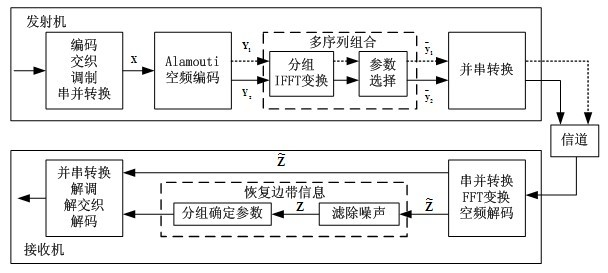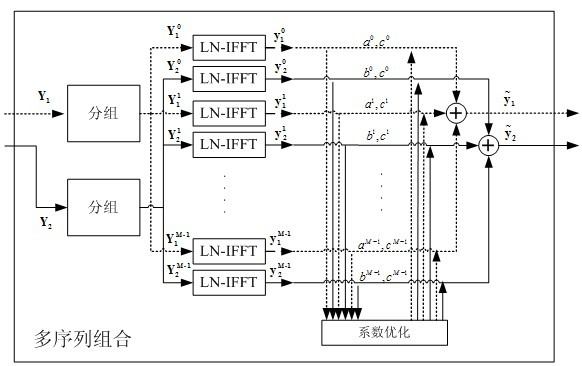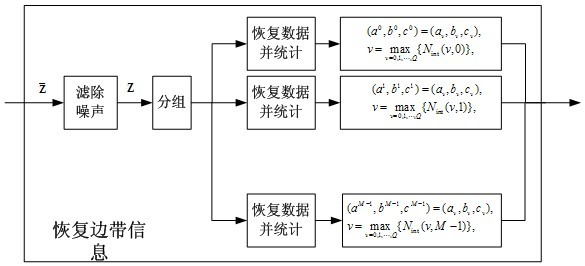Method for reducing peak-to-average power ratio of multiple input multiple output (MIMO) - orthogonal frequency division multiplexing (OFDM) signal for space-frequency coding
A technology of MIMO-OFDM and peak-to-average power ratio, which is applied in the field of wireless and wired communication, and can solve the problems of reducing peak-to-average power ratio and high complexity of MIMO-OFDM
- Summary
- Abstract
- Description
- Claims
- Application Information
AI Technical Summary
Problems solved by technology
Method used
Image
Examples
example
[0072] Parameter description: QAM modulation with q=4, MIMO-OFDM system with 2 transmit antennas and N=1024 subcarriers, Q=4 in the parameter set, and M=2 and M=4 for the number of groups respectively.
[0073] Simulation results show that while the present invention effectively reduces PAPR, the bit error rate performance when no sideband information is sent is basically the same as that when the sideband information is completely known. At the same time, due to the reduction of PAPR, the influence of the high power amplifier on the distortion of the signal becomes smaller, and the bit error rate performance of the present invention is better than the bit error rate performance obtained when the original signal passes through the high power amplifier state when the sideband information is not sent. Considerable improvement.
[0074] In Pr{PAPR>PAPR 0}=10 -4 , when the grouping number is 2, adopting the multi-sequence combination method proposed by the present invention can ...
PUM
 Login to View More
Login to View More Abstract
Description
Claims
Application Information
 Login to View More
Login to View More - R&D
- Intellectual Property
- Life Sciences
- Materials
- Tech Scout
- Unparalleled Data Quality
- Higher Quality Content
- 60% Fewer Hallucinations
Browse by: Latest US Patents, China's latest patents, Technical Efficacy Thesaurus, Application Domain, Technology Topic, Popular Technical Reports.
© 2025 PatSnap. All rights reserved.Legal|Privacy policy|Modern Slavery Act Transparency Statement|Sitemap|About US| Contact US: help@patsnap.com



